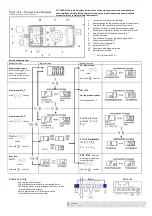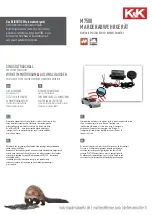
8
INSTALLATION AND OPERATION MANUAL FOR CIGS SOLAR MODULES Q-CELLS SE - EUROPE
5.1 MOUNTING VARIANTS
Please refer to the Q.CELLS clamp list regarding:
• approved mounting variants,
• approved clamps.
Only apply approved mounting variants and approved clamps for the installation.
The clamp list is available on www.q-cells.com.
With the point support, the mdule must not have contact with the subconstruction. The module
shall be supported by the clamp only. Please take into account that a module can bend up
to 15 mm under a snow load of 2400 Pa. The module glas must not have contact to under-
construction at any time.
With linear support, the modules lie along the lateral sides on the substructure. When using
this mounting variant, place a silicone-free rubber support plate between the substructure and
the clamps.
CAUTION! Incorrect orientation of the module may cause risk of fire hazard!
• The modules may be installed in landscape or portrait format.
• Install the module in such a way that the junction box is positioned in the upper area of
the module and the wires hang downwards.
• Ensure that the drainage openings of the frame are left open following installation to allow
water runoff. This prevents frost damage.
• Install the modules with a minimum tilt angle of 3° and a maximum tilt angle of 75°.
Facade installations are not allowed.
• For installations with a tilt angle < 20°, regularly check for dirt built up (soiling, bird drop-
pings, etc.). Rain should help to remove soiled areas, though regular cleaning is recom-
mended for all installations (see Chapter 7 “Cleaning and maintenance”).
• Install the module in such a way that rainwater and snowmelt can run off freely to avoid
standing water or puddling.
• The optimal tilt angle of the module depends on the respective latitude. We recommend
a photovoltaics simulation tool to ensure the optimal orientation.
MOUNTING VARIANTS
AND CLAMPS
SPECIFICATIONS FOR
POINT SUPPORT
SPECIFICATIONS FOR
LINEAR SUPPORT
MODULE ORIENTATION
AND TILT ANGLE
MO
DU
LE



































